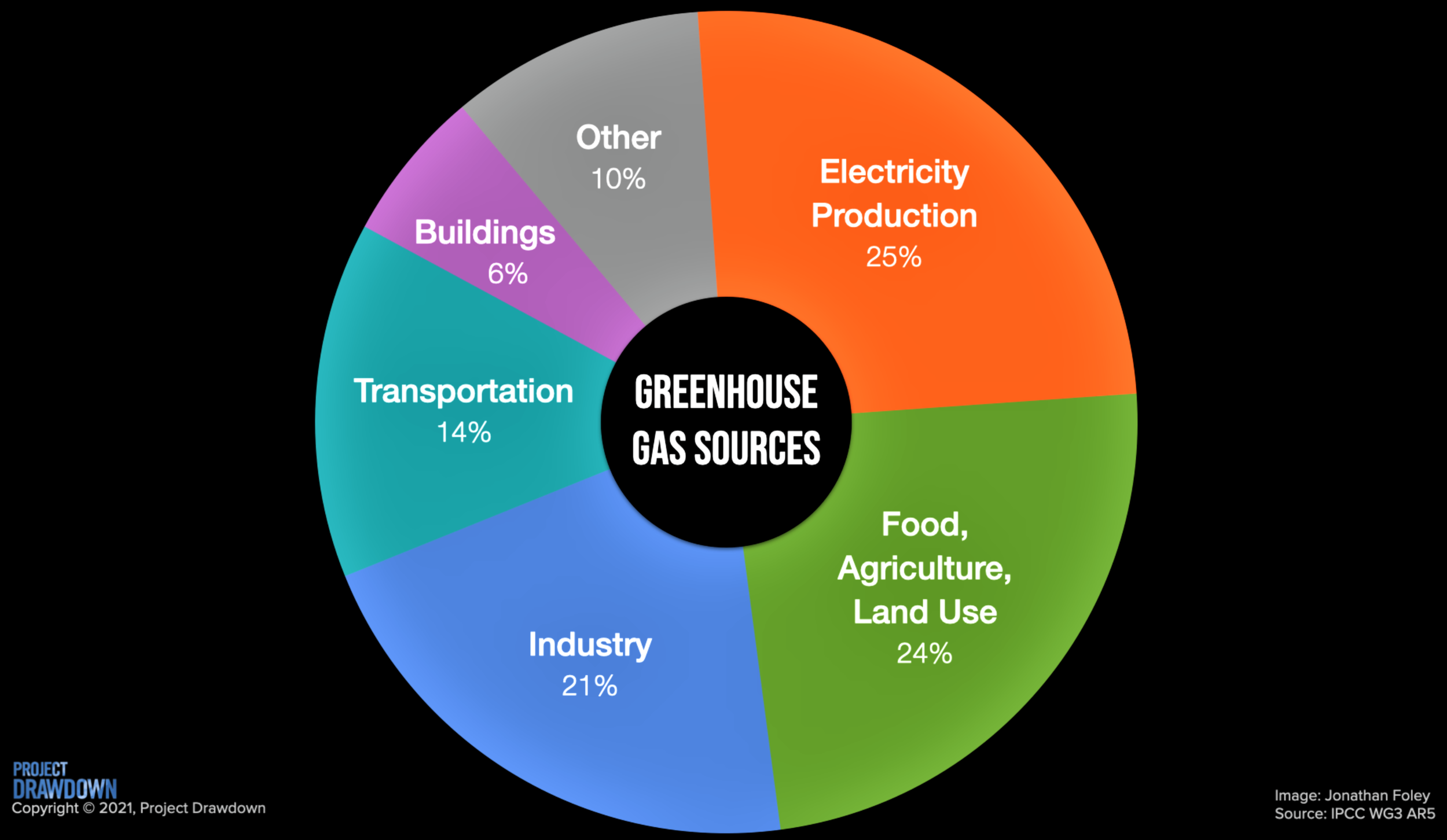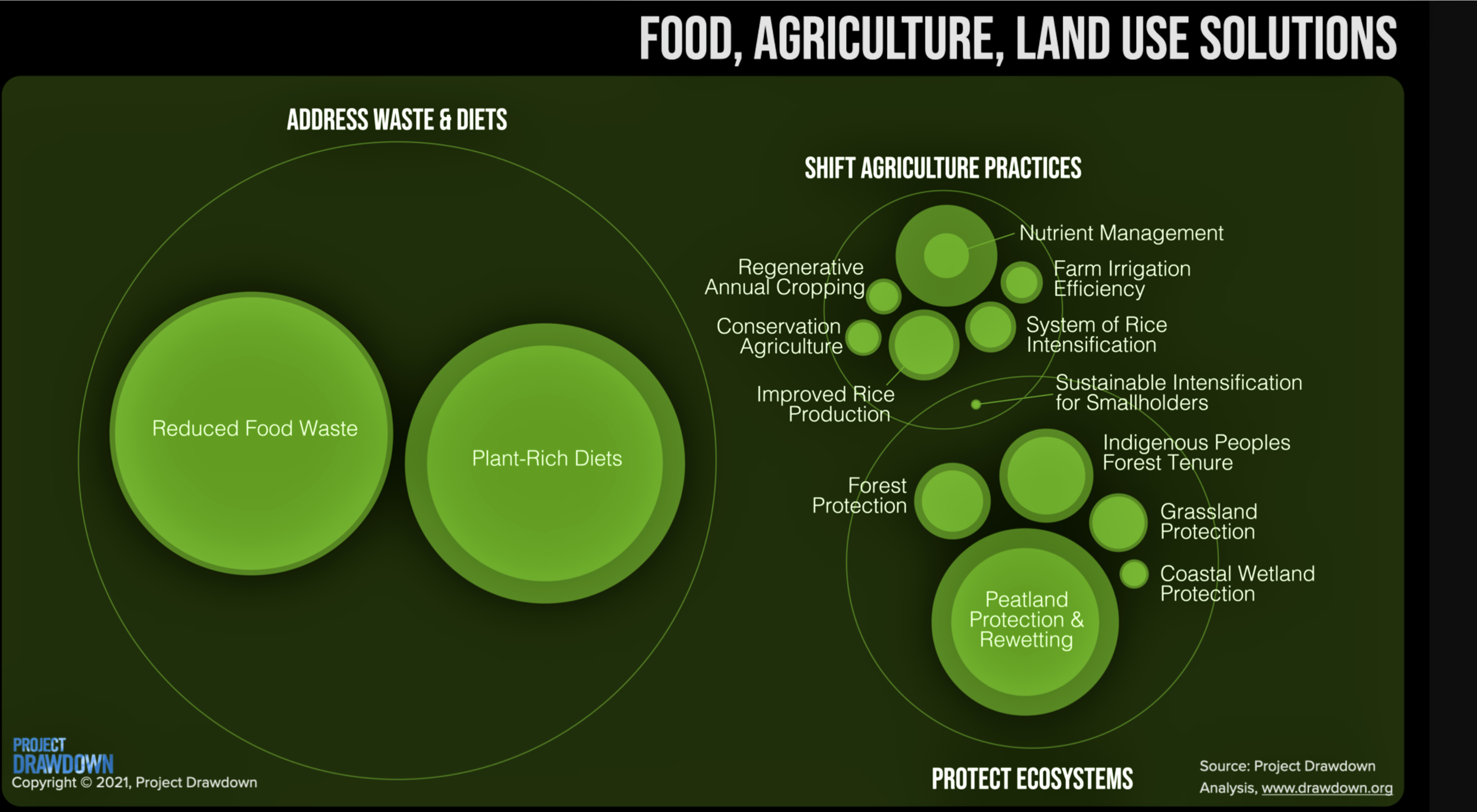If the climate crisis seems like a confusing and overwhelming threat, there is a new tool to help understand it and show us how what we do fits into the big picture.
Climate Solutions 101 from Project Drawdown, offers six, 23-minute videos that show how the pieces of the climate puzzle fit together, the causes of the problem and what we can do about it. This is the latest in their ongoing climate advocacy, stemming from the success of the 2017 best-seller “Drawdown: The Most Comprehensive Plan Ever Proposed to Reverse Global Warming”, by Paul Hawken.
Project Drawdown shows us that five sectors cause 90% of global GHG emissions and just two — electricity generation and food production — are half the problem, responsible for 49% of emissions. And even conservative estimates show that emissions from animal agriculture are 15% of global emissions, more than half of total food production’s contribution.
When it comes to global emissions “we hear a lot more about electricity than we do about food and it turns out they are about equally important,” said Jonathan Foley, Executive Director, Project Drawdown.
“Drawdown” is the point in time that global emissions start to fall. The researchers have documented the causes of the climate crisis across all sectors and then suggest all of the possible solutions, ranked by their potential impact. These range from the incremental to the transformational and show the choices that businesses, governments and individuals can make to drive change.
Of the Top Ten most effective climate actions, #3 is reducing food waste and #4 is adopting a plant-rich diet. The #1 most effective action is to control and reduce refrigerant gases in fridges, freezers and air conditioners.
So, some of the most effective actions involve what we eat and how food is produced. Looking more closely at food production, this chart shows that most sources of food-related emissions are tied to animal agriculture, the most potent of which are methane and nitrous oxide from burping cows and sheep, manure, and chemical fertilizer — much of which is used to grow feed crops.
In the report “Farming Our Way Out of the Climate Crisis”, the Drawdown researchers map out solutions large and small across the spectrum of food production. They have been criticized for advocating incremental emissions reduction in the existing animal agriculture system, such as the debatable impact of grass-fed beef or the amount of carbon sequestered by soil.
But if we focus on transformational rather than incremental change, the impact can be huge as seen below.
The circles in the chart above show the potential impact, sized by opportunity, so the bigger the circle, the bigger the potential climate solution. Changing how we manage food waste and switching to more plant-based diets would have the two biggest impacts on food sector emissions. The researchers say we can “reduce the impacts of agriculture on the environment through our dietary choices, especially by reducing the amount of red meat and dairy products we eat.”
These recommendations are consistent with multiple studies saying people in western nations need to eat less meat, eggs and dairy to reduce emissions if we are to meet the Paris climate goals. For the individual, the lowest hanging fruit to slow down the climate crisis is eating plant-based food and reducing food waste.


